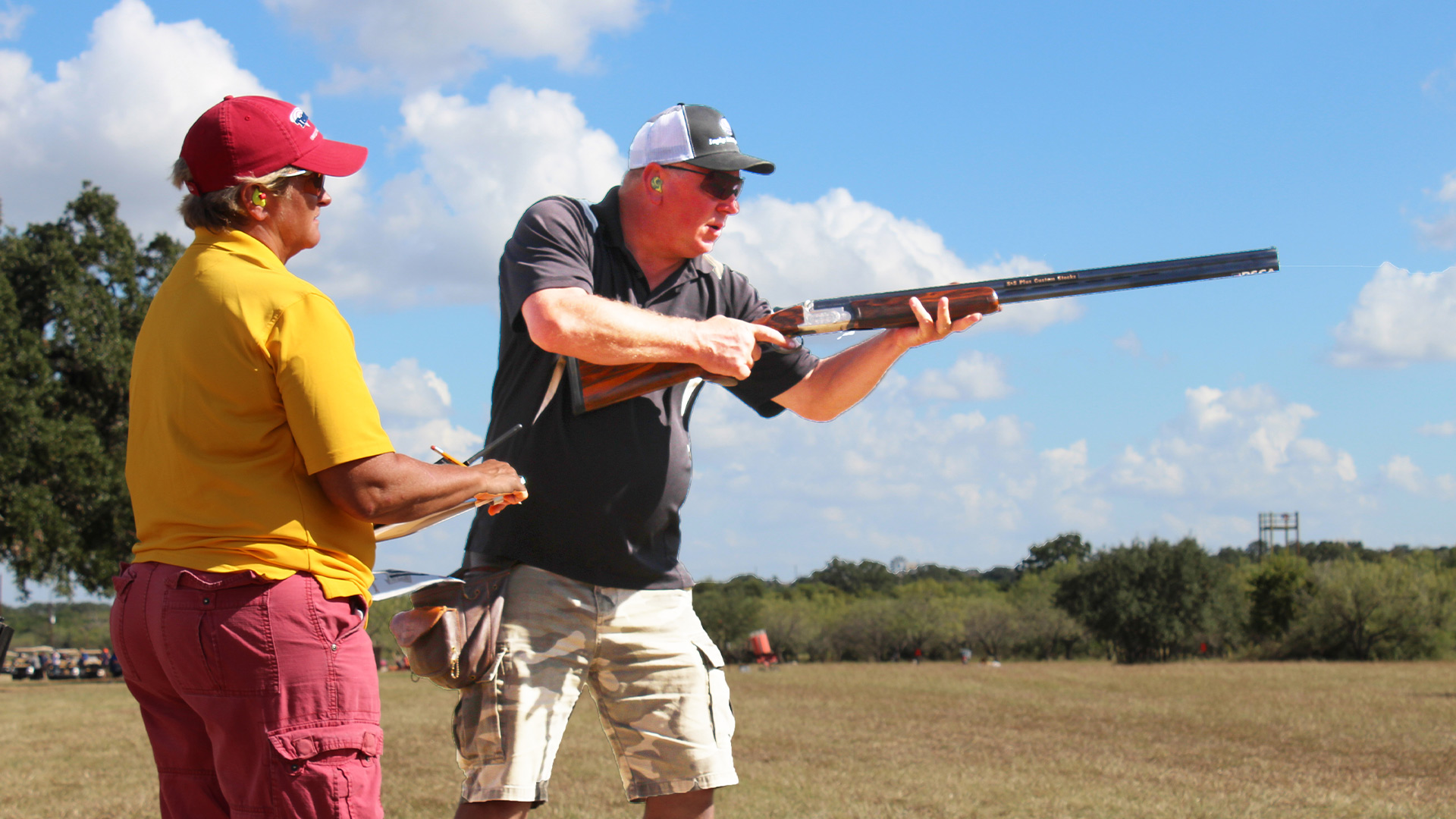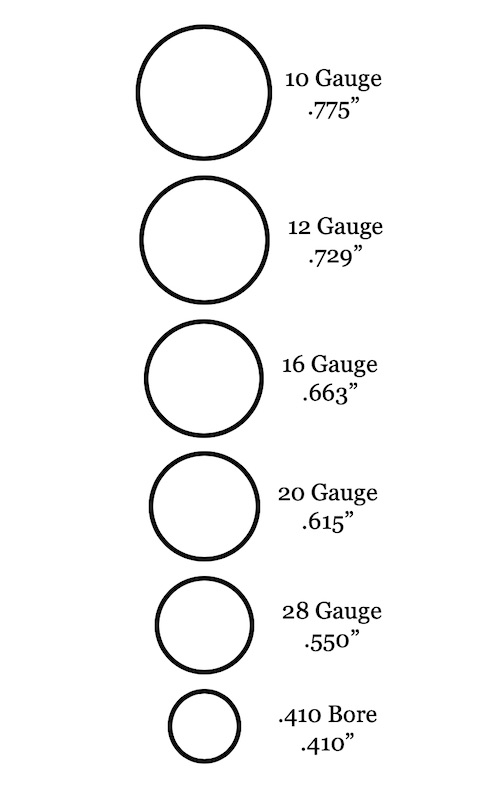
Shooting with both eyes closed will make you more accurate. How do you open your left eye? These techniques will help you master the art and science of shooting with your left side open. Biomechanics is a great way to learn about cross-dominant alignment of the eyes. Read on for more information. First, let's discuss why you should keep both your eyes open while shooting.
Cross-dominant eye
Shooting clays openly with both eyes is beneficial for many reasons. The main one is consistency. Consistency is key. Shooting with only one eye closed can make it difficult to predict where the shot will be taken. If you have both eyes open, it will make it easier to see clay and make the shot. You will need to adjust your shooting technique if you are using one eye. This is not an easy task. Practice shooting clays with one eye open to learn how to use both eyes.
This is a common problem among cross-dominant gunners. Shooters almost always use their dominant eyes to fire while the eye of the other is closed. Cross-dominant shooters can try firing with their non-dominant gaze. Even if it makes you feel uncomfortable, it will become second nature with time. Pennsports will teach you the basics if you're not confident. He has been teaching dual-eye shooting for 20 years.

There are many benefits to shooting with both eyes wide open
It is a great skill to learn how to shoot clays using both eyes. You will be able to shoot with both eyes open, which can help you to be more consistent and precise. Your eyes can also see wider than their opposites. This will enable you to train the brain to focus on the target, while also maintaining muscle memory. This video will show you how to shoot this technique, which was created by a Green Beret badass.
It is best to practice your shooting technique with a moving target while you learn to shoot with both your eyes closed. You should aim for the long, slow crosser, which forces your eyes to focus on the barrel and the bird at the same time. You will soon get used to it. It's also safer because you won't be able to hit a moving target by only one eye.
Techniques
One of the best ways you can eliminate misses below a target is to shoot clays with both eyes wide open. Many shooters raise their heads to see the break and the shot location. This will change the alignment of the clay with the target and cause the shot to go too low. Shooters may be more anxious before they shoot and/or change their positions to avoid misalignment. As a result, the recoil from the first shot will throw their body off balance, making a second shot difficult.
Analyze each missed opportunity and reflect on what went wrong. It's frustrating to get zeros, but it is important to try again. You have many options to break clay. You can achieve higher scores and be more successful at breaking the target by using different methods. To avoid being hit by the clay, aim your shots with both of your eyes open.

Biomechanics
Clay shooters track their clays with both eyes open. The shooter closes one eye to take a shot. They can also switch the eye to their preference if they need. Their upper body swings and the barrels of the gun follow their lead. Clays shot at an acute angle require more rotation of your upper body than standard shots.
Shooting with both eyes open can have many benefits. However, the biggest benefit is that it increases situational awareness. For accurate target acquisition, you will be able to see the target rise behind you by using both eyes. The ability to use both eyes simultaneously can improve your trajectory estimation, range, and aim. Shooting with both your eyes open will enable you to shoot higher than your target. This technique is not easy to master, but the benefits will be worth it.
FAQ
What is the most important part when hunting animals?
How do we get there We start by learning how to shoot accurately. Next, you must learn how to hit your target. We must also learn to adjust when we miss our target.
Knowledge is key to hunting. You will never be able to improve if your knowledge is not up-to-date. It might seem like you have improved because of your better shots. But if it wasn't so, those shots won’t make any difference. The same applies to hitting targets. If you don’t get why you’re not succeeding, you won’t be able to change. This means that you must know what you are aiming for.
Knowledge is key. Your ability to hunt is dependent on your knowledge of the animal that you're hunting. You want to learn as much about the animals that you see while you are out in nature. It is important to understand their habits, behaviors, and personalities. This way, you can plan your hunts so they go smoothly and efficiently.
Always learn from people who have succeeded before you. There are many books out there on the subject. In addition, there are websites like www.thehuntingzone.com that offer great tips and advice. Finally, there are people who have years of experience behind them. They can help you identify what works and what doesn't work.
It's time for you to practice once you've learned all that you can. Practice makes perfect. It's not enough to practice until you feel confident. Instead, you should practice until your confidence grows. Confidence helps you relax and enjoy the process. Relaxation can help you focus on the task in hand. You can capitalize on every opportunity that comes your way by concentrating. Opportunities come only when you're relaxed and focused.
Now it's time put your new skills to work. Do not worry if your attempts fail. Just keep practicing and improving. Eventually, you'll find success.
What kind of training should I get to hunt? What's the time commitment?
An introduction course is necessary to learn how hunting works. This course will help you learn about different game types and the laws that surround hunting.
You will learn how firearms and ammunition should be handled. These items can also be used safely.
This course may last from two to three months. Some courses are offered online. Some courses are offered online. Others can be taken in person.
A written test is required to qualify for a license. You may also need evidence that you have taken a hunter-education course.
What is the cost of getting licensed? What if I don’t make enough money?
The cost of getting licensed varies depending on the state you live in. It costs between $20 and $100.
You may be eligible to receive a grant or loan if your income is not sufficient.
You will also need to pay a tag. The price of tags varies depending on the game you are hunting.
There are tags available for bear, elk and moose as well as waterfowl, upland birds and furbearers, such as foxes.
Some states require you to register with the Department of Natural Resources before you can obtain a license.
Check the regulations in your area before you hunt.
What types of guns can be legally used?
There are many types of hunting weapons that you can use.
Hunting rifles, shotguns and handguns are the most common weapons used by hunters.
Rifles can fire bullets at long distances. Most shotguns come with pellets. Handguns fire bullets through their hands. Muzzle-loading firearms work in the same manner as modern-day pistols.
Crossbows are used to shoot arrows. Bowhunters also call archery weapons bowhunters.
It takes special training to hunt with a bow crossbow. It is important to learn how the crossbow works and how to shoot it.
Is hunting dangerous?
Yes, hunting is dangerous.
There are many different ways you could injure yourself.
Improper shooting techniques are one way. An example of this is when you shoot at an incorrect angle or hit the wrong area of the animal.
Another possibility is to be attacked by another pet.
Every year, there are many hunting accidents. Guns are responsible for many people being killed or seriously hurt.
Hunters must ensure that their guns are not loaded until they reach their destination.
They should also make sure their guns are not loaded when they go into the woods.
Always keep your eyes peeled. Listen for the sounds and be attentive to your surroundings.
You must be able to defend yourself against any animal that you approach.
Never chase after prey. Instead, wait patiently to see them.
Avoid taking shortcuts. They could result in injury or death.
Be cautious around cliffs and other locations where it is difficult to see below.
Avoid streams and rivers. These areas could flood without warning.
Hunting is a time to forgo alcohol. Alcohol affects your judgment and slows down reaction time.
Keep all safety equipment close to you. Always carry a first-aid kit and flashlight.
It is essential to be able to handle an emergency. If you do not know how to perform CPR or administer first aid, find someone who knows how to help you.
How much does it cost for a hunter to become?
Hunting can be expensive depending on where you live.
You may not need to pay much to gain access to public lands in some areas.
Some states require licenses and permits before you can hunt.
The type of firearm used will affect the price of hunting. A rifle will usually cost more than a gun.
A license cost can be between $10-$50. Additional tags may be required depending on how often you hunt.
Hunting certain species requires a permit. The size of each animal will affect the amount of money that you must spend.
Wild turkey hunting can be expensive. You'll need to pay $150 for a tag.
How many Americans are dependent on hunting?
Over 300 million hunters reside in the United States. That means there are nearly twice as many hunters as people living in New York City.
Hunting is a American pastime which dates back to centuries. But, Americans are hunting less for sport today than ever. According to U.S. Fish & Wildlife Service (FWS), only 2 percent of the population hunts regularly. The percentage of young adults hunting is even lower.
But while hunting may seem like a relic of another time, it remains popular among older generations. According to a survey, 68% of baby boomers expect to hunt once again when they are older. Hunting is an opportunity to reconnect with nature and experience the outdoors.
For younger generations hunting is not necessarily a priority. According to National Shooting Sports Foundation, 18% of millennials don't consider themselves to be avid shooters.
FWS works hard to ensure that America's wild places are accessible to all.
The agency launched "Wild Lands", a campaign to raise awareness of public lands across the nation in 2014. The goal is to educate people about the importance of preserving these areas and encourage them to visit them.
Conservation efforts are also encouraged through the Wild Lands Program. FWS and National Rifle Association collaborated to create Project Gunter a youth shooters program. This program teaches kids how firearms can be safely handled and helps them to develop skills such safety and marksmanship.
Project Gunter now includes women and minorities. The result is that more children learn how to shoot guns, and are active participants in wildlife conservation.
Statistics
- - Percent of residents with paid hunting licenses: 0.7%- (stacker.com)
- Thanks to the 1937 Pittman-Robertson Act, an 11% excise tax was placed on the sale of firearms, which were then used for conservation. (stacker.com)
- Licenses dropped from a peak of roughly 17 million in the 1980s to 15 million in 2019, according to The Seattle Times. (stacker.com)
- In less than 20 years, Rhode Island saw a 40% drop in the number of hunting licenses for residents, according to The Valley Breeze. (stacker.com)
External Links
How To
How to hunt wild turkeys
Wild Turkeys live in North America. They are most prevalent in Texas, Oklahoma. New Mexico, Arizona. Colorado. Utah. California. Nevada. Idaho. Wyoming. South Dakota. Montana. Wild Turkeys are omnivores of insects, grasses, and seeds. In certain regions, wild turkeys eat berries or acorns as well as fruit from trees. They are healthy and strong thanks to their diet. Wild Turkey feathers are used to make clothes and hats. The meat from their breast is eaten.
These are some safety tips for hunting wild turkeys. Wear long pants and closed-toe shoes. Avoid wearing perfume or any cologne. They attract predators. If you see a predator, do not run away. Instead, move slowly towards your vehicle. Be calm and composed as you approach a bird. It might take several tries before you get close enough to shoot. Use 00 buckshot when shooting at wild turkeys. Shoot only one shot at a wild turkey.
If your gun jams try again later. Avoid getting hit by flying particles. If you're lucky, a hunter might come along to help you clean up.